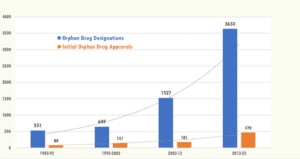Opinion | Healthcare at Home Isn't Accessible for All – Medpage Today

Care in the home has been touted as a panacea in healthcare as it’s been shown to reduce costs, improve outcomes, and enhance the patient experience. From telehealth to virtual care and same-day delivery, the pandemic teleported our ability to deliver care in the home. What has been lost in this evolution is a serious discussion about the basic services required to effectively deliver this type of care at an individual level.
Like many of my peers, I volunteered at the hospital across the street from my home during the pandemic. During the first week, I was assigned a “resident” to care for — not a clinical healthcare worker, but a patient. It turned out this patient was homeless with no formal home for discharge, so policy dictated she remain in the hospital. She had previously been able to find a temporary home but found herself back in the ED weeks later.
For many, the hospital serves as a default home and begs an important question about how we define “the home.” One’s home might be a crowded apartment, rural location, mobile home, long-term care facility, shelter, or worse, the street.
There are half million Americans who are chronically homeless, but equally concerning are the millions who are under-homed.
What does it mean to be under-homed? Internet access, electricity, caregiving support, transportation, digital literacy, and security (food and physical) are just a few of the assets enabling care in the home. But too many people live without these resources. Before the pandemic, 57% of Medicaid enrollees lived in poor or inadequate housing situations. Among the U.S. population, 6% of people currently do not have broadband Internet. For those ages 60 and older, 27% live alone and many may have difficulty navigating medication regimens.
There is a spectrum of housing, meaning we have an opportunity redefine and reimburse a new era of nonclinical services that impact health and access to care. Many healthcare assets in the home could be categorized as hardware or software technology — we have physical human assets (home, caregivers, transportation) and the “operating system” or software services (Internet, electricity, water, remote monitoring). But these nontraditional medical assets are generally not covered by insurance the same way as medical products like diabetic pumps and oxygen.
Earlier this month, North Carolina Medicaid launched an effort to fund non-medical interventions like food and transportation. It’s time for other states and insurance companies to take a similar approach.
To be fair, this movement requires a debate on integrating upstream policies and resources (housing, labor) while building a body of evidence for measuring the return on these investments. It also requires a reality check: this won’t fix our broader healthcare challenges. Heading into the pandemic, 28 million Americans did not have health insurance; legacy systemic failures (uninsured, inequity, mental illness) impede the success of care in any setting; and to an extent, a combination of homecare and facility-based care will always be necessary. But increasing access to care in the home has the potential to help fill healthcare gaps — and it’s critical we don’t leave people who are under-resourced behind.
When innovation in healthcare dismisses socioeconomics, it often depletes and defangs its success. For many patients, the new online world is foreign or unattainable; by contrast, there are those fluently traversing the metaverse. Bluntly stated, those who are senior, underserved, or have multiple chronic conditions still need human support in the home at some level.
The good news is the private and public sector is working to keep pace. The White House has put forward an extensive response to address mental health access and funding, and just this week, Congress passed telehealth continuation provisions. Many states have initiated value-based care schemes that include the social determinants of health (SDoH). On the labor side there is a resolution in New York to pay a minimum wage to home care workers, which can help address the 20% in this labor pool who live at the federal poverty level. Several foundations and companies are allocating free cell phones or tablets to those who need them. Many technology companies have now taken a vertical in healthcare with a focus on making home care more efficient.
All homes are not equally equipped — and it’s essential to make sure assets in every home go beyond clinical care. Our $4 trillion dollar system, fraught with massive constraints and challenges, is ready for new models and locations. Ultimately, the right patient receiving the right ratio of clinical and non-clinical care will allow care in the home reach its full and necessary potential.
Meghan FitzGerald, DrPH, MPH, RN, is an adjunct professor with the Columbia University Mailman School of Public Health and a private equity investor. She has decades of experience ranging from frontline patient care to serving as an executive at Merck, Pfizer, and Cardinal Health.



